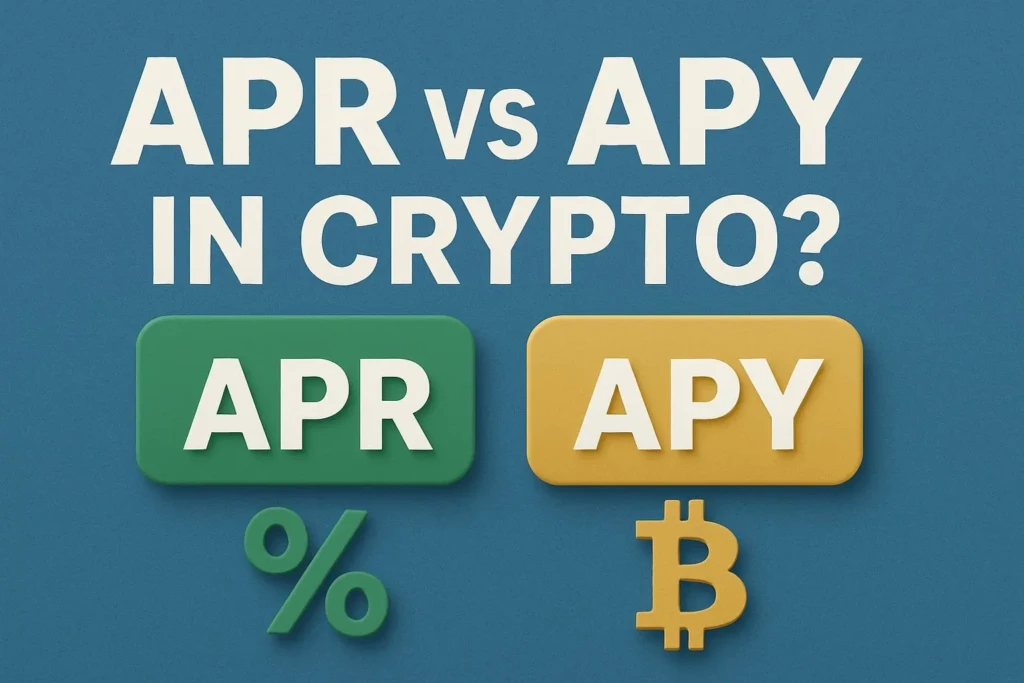Understanding APR and APY
What Is APR?
APR represents the annual interest rate charged or earned on an investment or loan, without accounting for compounding. In the crypto space, APR is commonly used to express the interest rate on loans or the cost of borrowing. For example, if you borrow 1,000 USDT at an APR of 10%, you would owe 1,100 USDT after one year, assuming no compounding.
What Is APY?
APY, on the other hand, includes the effect of compounding, providing a more accurate representation of the potential returns on an investment. In crypto, APY is often used to express the returns on staking or yield farming, where rewards are reinvested to generate additional earnings. For instance, if you stake 1,000 USDT at an APY of 10%, and the interest is compounded daily, your balance would grow to approximately 1,105.16 USDT after one year.
Key Differences Between APR and APY
| Feature | APR | APY |
|---|---|---|
| Compounding | Does not include compounding | Includes compounding |
| Calculation | Simple interest calculation | Complex calculation accounting for compounding |
| Usage in Crypto | Common in borrowing and lending | Common in staking and yield farming |
| Return Representation | Nominal return without reinvestment | Effective return with reinvestment |
Understanding these differences is vital when evaluating crypto investment opportunities. APR provides a straightforward view of the interest rate, while APY offers a more comprehensive picture by factoring in the effects of compounding.
Practical Implications in Crypto
Staking and Yield Farming
In decentralized finance (DeFi), staking and yield farming often use APY to represent potential returns. Since rewards are frequently compounded, APY gives a more accurate estimate of earnings. For example, if a yield farming protocol offers an APR of 10%, and the rewards are compounded daily, the APY would be higher, reflecting the additional earnings from reinvested rewards.
Borrowing in Crypto
Conversely, when borrowing crypto, APR is typically used to represent the cost of the loan. Since borrowing costs do not involve compounding, APR provides a clear understanding of the interest to be paid over the loan term.
Calculating APR and APY
APR Calculation
APR is calculated using the formula:
APR = (Interest / Principal) × 100
For example, if you borrow 1,000 USDT at an interest of 100 USDT over one year, the APR would be:
(100 / 1,000) × 100 = 10%
APY Calculation
APY is calculated using the formula:
APY = (1 + r/n)^(nt) – 1
Where:
- r is the annual interest rate
- n is the number of times interest is compounded per year
- t is the time the money is invested or borrowed for, in years
For example, if you invest 1,000 USDT at an interest rate of 10% compounded daily for one year, the APY would be approximately 10.52%.
Risks and Considerations
Volatility in Crypto Markets
The crypto market is known for its volatility, which can impact both APR and APY. While APR remains fixed, the actual returns represented by APY can fluctuate due to changes in the underlying asset’s value. It’s essential to consider market conditions when evaluating potential returns.
Platform Risks
Different platforms may offer varying APR and APY rates, but these rates can come with different levels of risk. It’s crucial to assess the platform’s security, reputation, and the underlying mechanisms of the investment opportunity before committing funds.
Conclusion
Understanding the difference between APR and APY is crucial for making informed decisions in the crypto space. While APR provides a straightforward view of interest rates, APY offers a more comprehensive picture by accounting for compounding. By carefully evaluating these metrics, you can better assess the potential returns and risks associated with your crypto investments.
FAQ
Q: What is the main difference between APR and APY in crypto?
APR represents the annual interest rate without considering compounding, while APY includes the effects of compounding, providing a more accurate representation of potential returns.
Q: Which is better for investors, APR or APY?
APY is generally better for investors, as it accounts for compounding, leading to higher effective returns over time.
Q: Can APR and APY be the same in crypto?
APR and APY can be the same if there is no compounding involved. However, in most crypto investments, especially those involving staking or yield farming, APY is higher due to compounding.
Q: How does compounding affect APY in crypto?
Compounding increases the total returns over time, as interest earned is reinvested to generate additional earnings, leading to a higher APY compared to APR.
Q: Should I consider APR or APY when choosing a crypto investment?
Consider both APR and APY, but prioritize APY for investments involving compounding, as it provides a more accurate estimate of potential returns.

